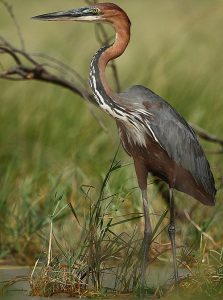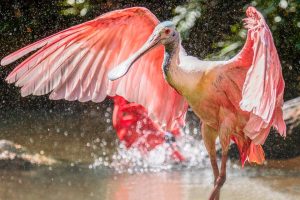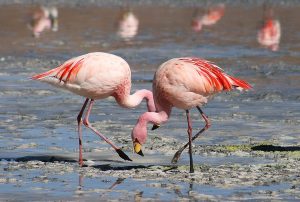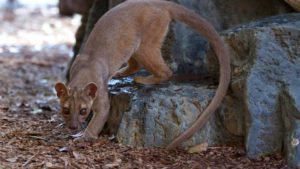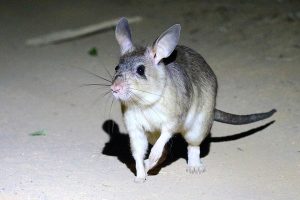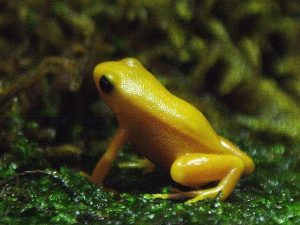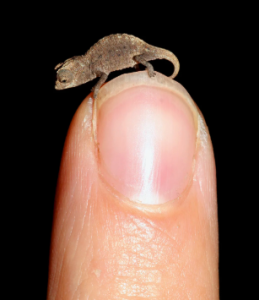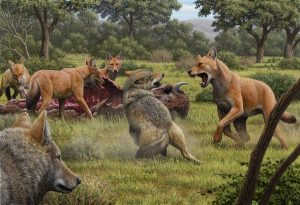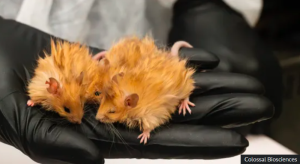Podcast: Play in new window | Download (Duration: 6:08 — 6.8MB)
Thanks to Jaxon for suggesting this week’s topic, Coelurosauravus!
Further reading:
New Research Reveals Secrets of First-Ever Gliding Reptile
The modern Draco lizard glides on “wings” made from extended rib bones:
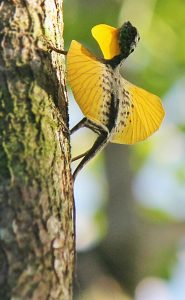
Coelurosauravus glided on wings that were completely different from any other wings known [art from the first link above]:
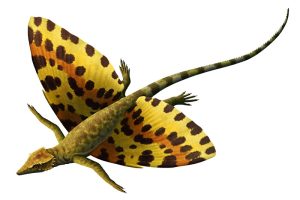
Show transcript:
Welcome to Strange Animals Podcast. I’m your host, Kate Shaw.
This week we’re going to learn about an extinct animal suggested by Jaxon. It’s called Coelurosauravus and it lived around 255 million years ago in what is now Madagascar.
Coelurosauravus was a member of the Weigeltisauridae family, reptiles whose fossils have been found not just in Madagascar but in parts of Europe, and maybe even North America (although we’re not sure yet). They were gliding reptiles that probably lived in trees and ate insects and other small animals, sort of like modern gliding lizards. But while most gliding lizards are very small, Coelurosauravus grew over a foot long, or around 40 cm, and that’s nowhere near the weirdest thing about it.
To explain why Coelurosauravus was so very peculiar, we have to learn a little about other gliding reptiles. Back in episode 255 we learned about kuehneosaurids, and that’s a good place to start.
Kuehneosaurids lived around 225 million years ago in what is now England. This wasn’t all that long after Coelurosauravus lived and not that far away from where some of its relations lived, but the two weren’t related. Kuehneosaurus looked like a big lizard although this was before modern lizards evolved, but it was a reptile and it was even larger than Coelurosauravus. Kuehneosaurus grew about two feet long, or 70 cm, including a long tail, and probably lived in trees and ate insects.
Kuehneosaurus glided on sail-like structures on its sides that were made from extended ribs with skin stretched over them. Its wings weren’t all that big, although they were big enough that they could act as a parachute if the animal fell or jumped from a branch. Another gliding reptile, Kuehneosuchus, had wings that were much longer. In a study published in 2008, a team of scientists built models of kuehneosuchus and tested them in a wind tunnel used for aerospace engineering. It turned out to be quite stable in the air and could probably glide very well.
We don’t know a whole lot about the kuehneosaurids because we haven’t found very many fossils. We’re not even sure if the two species are closely related or not. We’re not even sure they’re not the same species. Individuals of both were uncovered in caves near Bristol in the 1950s, and some researchers speculate they were males and females of the same species. Despite the difference in wings, otherwise they’re extremely similar in a lot of ways.
Generally, researchers compare the kuehneosaurids to modern draco lizards, which we talked about in episode 237, even though they’re not related. Draco lizards are much smaller, only about 8 inches long including the tail, or 20 cm, and live throughout much of southeastern Asia. Many gliding animals, like the flying squirrel, have gliding membranes called patagia that stretch from the front legs to the back legs, but the draco lizard is different. It has greatly elongated ribs that it can extend like wings, and the skin between the ribs acts as a patagium. This skin is usually yellow or brown so that the lizard looks like a falling leaf when it’s gliding. Draco lizards can fold their wings down and extend them, which isn’t something the kuehneosaurids appear to have been able to do.
But now let’s return to Coelurosauravus. It too had wing-like structures on its sides that consisted of skin stretched over bony struts. But in this case, the bones weren’t elongated ribs.
Coelurosauravus had about 30 pairs of long, flexible bones that extended from the sides of its belly, and it could open and close its wings like draco lizards do. Scientists think the bones developed from osteoderms, which are bony structures that many animals have on their skin, that act as a sort of built-in armor. As far as we know, no other animal in the entire history of life on earth has developed what are basically wings from osteoderms.
Coelurosauravus had long, slender legs with sharp claws that it used to climb around in trees, and a long tail to help it keep its balance as it climbed. Its head was decorated with a bony frill that had spikes along the edges. The frill might have been brightly colored, a way to attract mates or intimidate potential predators, and it might also have been an attachment site for strong jaw muscles.
In other words, Coelurosauravus had four legs, two wings, and horns on its head. This little reptile was basically a dragon.
You can find Strange Animals Podcast at strangeanimalspodcast.blubrry.net. That’s blueberry without any E’s. If you have questions, comments, or suggestions for future episodes, email us at strangeanimalspodcast@gmail.com. We also have a Patreon at patreon.com/strangeanimalspodcast if you’d like to support us for as little as one dollar a month and get monthly bonus episodes.
Thanks for listening!
